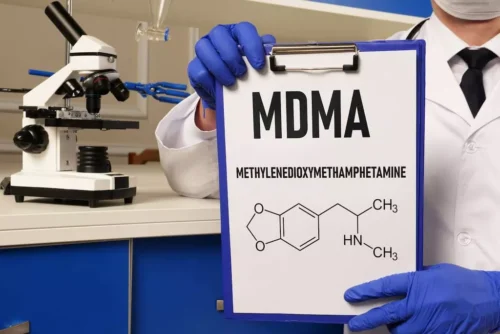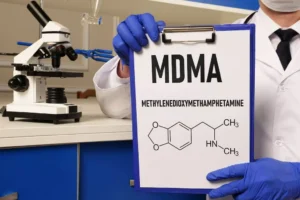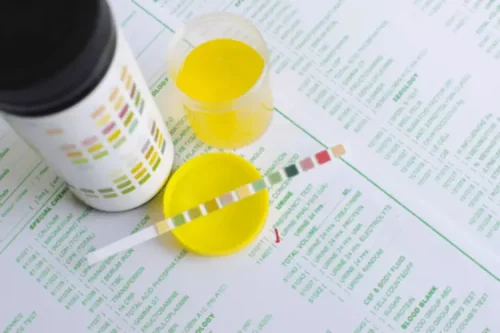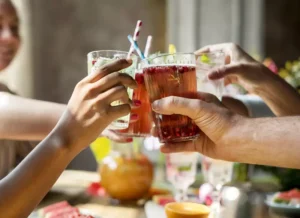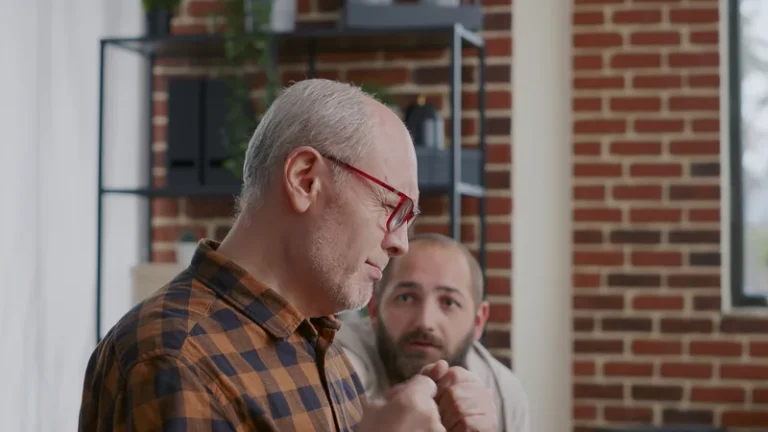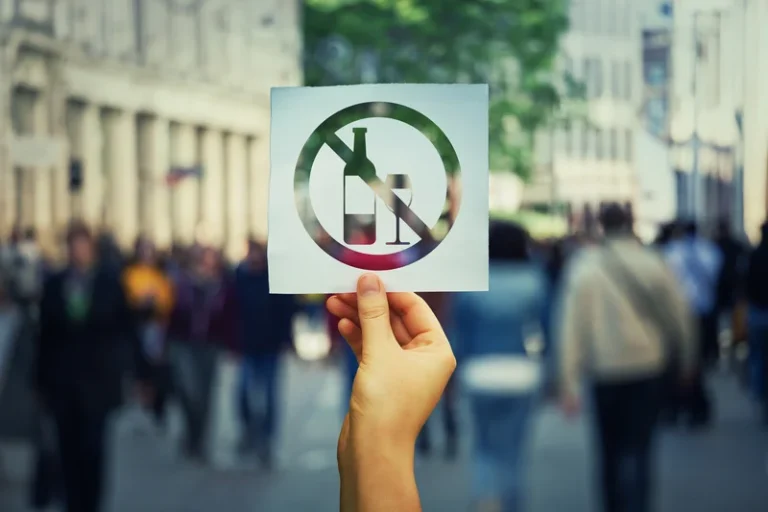
To adjust for known differences in body water, women received 85% of the alcohol administered to men. Participants in both the alcohol and placebo group were required to finish each glass within five minutes. After the last glass, participants had a break for 15 min before proceeding with the decision-making tasks. Breath alcohol concentration (BrAC) was measured at baseline, 25 min later, just before the decision-making tasks and after additional appr. The Biphasic Alcohol Effect Scale BAES; 41 was performed every time BrAC was measured and the Drug Effect Questionnaire DEQ; 42 was measured the second and third time BrAC was measured. Many of the risk factors for alcohol dependency are similar to those of overall drug use disorders (including illicit drug disorders).
‘There’s no such thing as moderate drinking’
Our Treatment Advisors are available 24 hours a day to help you or a loved one access care. We’re ready to make sure you have the support you need to achieve lifelong recovery. The National Institute on Alcohol Abuse and Alcoholism notes that 85.6% of people in the U.S. age 18 or older report they have consumed alcohol at some point in their lives. 69.5% reported they drank alcohol in the past year, and 54.9% reported they drank within the last month.
- As they mature, most people with a drinking problem can give alcohol up without any withdrawal symptoms, separating themselves from addicts.
- Kwate and Meyer (2009) found a correlation between problem drinking among African-American women and exposure to alcohol advertisements, suggesting that as ad exposure increased, so did alcohol consumption.
- For many individuals in recovery, the safest and most advisable course of action is to maintain complete abstinence from alcohol to protect their physical and mental health and prevent the risk of relapse.
- Socially acceptable addiction can be defined by compulsive use or engagement with certain behaviours or substances which may be harmful to the individual but are widely accepted or encouraged by society.
- The alcohol industry uses complex targeted marketing strategies that focus on African Americans, Latinos, and American Indians, among other demographic groups, such as youth and other ethnic minorities (Alaniz and Wilkes 1998; Moore et al. 2008).
Alcohol consumption in the United States since 1850
- It’s wise to seek help if you think your alcohol consumption is problematic.
- The death rates are typically higher in Eastern Europe and lower in North Africa and the Middle East.
- In the chart, we see the average consumption (in liters of ethanol) of different beverage types per person in the USA since the mid-nineteenth century.
- Studies are beginning to recognize the importance of premigration factors, including levels of alcohol use before migration as well as the cultural influences of countries of origin (Sanchez et al. 2014; Walsh et al. 2014).
According to this theory, the effects of alcohol to increase emotional reactivity and weaken cognitive control should give increased preference for deontological rather than utilitarian actions. In fact, we find the opposite, i.e. increased utilitarian responding due to alcohol. A possible account of this finding is that acute alcohol intoxication primarily affects moral judgment through effects on its cognitive elements, and does so by subtly shifting the balance between perceived costs and benefits in the utilitarian calculation. These findings, however, must be interpreted with caution, as it is difficult to determine whether advertisements directly result in increased alcohol consumption. To begin with, a variety of marketing strategies including distribution, product development, pricing, and targeted marketing all may affect links between advertising and consumption (Alaniz and Wilkes 1998; Roberts et al. 2014).
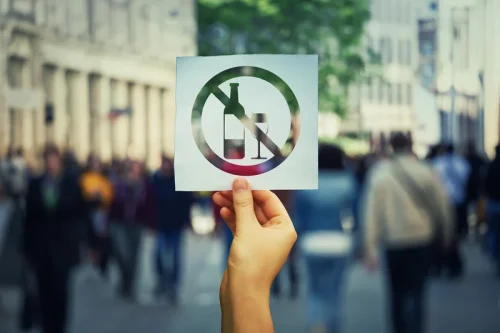
Is social drinking bad for your health?

Social drinkers don’t drink alone and stick to drinking in only social settings. There is no defined pattern of use for people who identify as social drinkers. Their alcohol consumption patterns can range from drinking each weekend with friends to one time per month at a work conference.
Maybe you are concerned that your drinking is becoming a problem, or maybe someone close to you has shown concern about your drinking. People tend to drink alcohol on these occasions, and in other social situations, both as a means of celebrating with others and as a way to relax and fit in during potentially stressful or uncomfortable situations. Alcohol is considered a drug because it depresses the central nervous system and can disrupt mental and motor skills. Unhealthy alcohol use can be harmful physically, emotionally, and economically.

Dr Vikas Jindal, a consultant at the department of gastroenterology at the CK Birla Hospital, Delhi, says, that the maximum recommended limit for alcohol consumption, as per WHO guidelines, is one drink per day for women and two drinks per day for men. As well as mainstream media campaigns, other influences have had a huge impact for example, social media influences a lot of young people. Individuals participating in food challenges online where they have to consume 10,000 calories in one day, or the popularity of ‘mukbangs’ which is essentially watching people eat these all play a part in normalising unhealthy eating.

Cannabis Sativa and Indica Side Effects of Use
- ” It’s hard to define the lines that separate social drinking, problem drinking, and alcoholism.
- In the last couple of years, programs like Hello Sunday Morning have been encouraging people to take a break from drinking.
- The hospitals do not exclude people or treat them differently because of race, color, national origin, age, disability, ethnicity, gender, gender identity, sexual orientation or sex.
- In the context of alcohol use, individuals are nested within their microsystem (their home, work, and school environments), which is nested itself within the larger community.
- Alcoholism, on the other hand, is a chronic condition marked by uncontrolled drinking, cravings, physical dependence, and significant life disruptions.
Here’s a guide to what social drinking is and how to recognize if you have a problem. The practice has become endemic to the point that social drinking problems are often overlooked. “If you are consuming large amounts of tea or coffee, then I would suggest that the effects of caffeine on your health need to be considered as well as the glucose hit of the possibly small amount of plant milk that you are adding. “Many plant milks—including oat milk—contain seed oils, which tend to contribute to inflammation in the body,” said Smith. “Modern diets lean towards higher levels of omega-6 oils, generally from highly processed seeds, which creates an imbalance in the ratio between omega-3 and omega-6 fats. “In a healthy person who’s consuming low quantities of oat milk and following a largely wholefood, minimally processed, lower carb diet, I would say it’s not a major issue,” she said.
This results in greater gender differences in alcohol use among Latinos compared with other U.S. populations, with recent trends suggesting similar levels of binge drinking between men and women in Western cultures (Iwamoto et al. 2012). Although traditionally perceived as a “masculine” behavior, binge drinking is now more acceptable among women in certain cultures that foster more balanced gender roles (Lyons and Willott 2008). A number of social and cultural factors predict increased alcohol use, including discrimination and its related stigma. The role of discrimination and stress in health-related risk behaviors, including alcohol use, is well established (Dawson et al. 2005; Hatzenbuehler 2009; Paradies 2006). The stress and coping framework frequently is applied to explain the influence of discrimination and stigma on health (Krieger 1999; Pascoe and Smart Richman 2009; Walters et al. 2002). This long-held theory posits that people consume alcohol to cope with the stress of their daily lives, including work-related stressors and racial and ethnic discrimination (Conger 1956).
- If you find yourself defending your drinking patterns, it may be time to examine your drinking behavior.
- This typically involves drinking with others in a casual or celebratory atmosphere, where the focus is on engagement and sociability rather than the sole act of drinking.
- Similarly, although we make a distinction between personal and social decision making in terms of outcomes, all decisions in our study were taken in private in front of a computer.
- We’ve all been there—making a promise to cut down on alcohol or to drink it moderately.
- Whereas important insights can be obtained from these observational studies, they cannot provide answers about the causal relationship between alcohol intake and behavior, as they are inherently correlational, and also prone to selection bias.
- Many people have relearned moderate social drinking through these approaches.
As expected under these conditions, while self-ratings of intoxication (“feeling effect” and “high”) were robustly influenced by alcohol, neither “liking” nor “wanting” ratings were affected. On one hand, this suggests that our findings are unlikely to be primarily driven by expectations, since expectations of alcohol effects are linked to experiencing alcohol in a naturalistic context. At the same time, alcohol effects on decision making under laboratory conditions may differ from those “in the wild”. Similarly, although we make a distinction between personal and social decision making in terms of outcomes, all decisions in our study were taken in private in front of a computer. Thus, future studies could extend our findings by investigating the effects of alcohol on social decisions made in a public setting (e.g., observed by an audience), where social signaling and reputational concerns also come into social drinking and drinking problem play.
Top social reasons people drink alcohol
Both forms of drinking can be done responsibly, but it’s essential to be mindful of individual alcohol https://ecosoberhouse.com/ tolerance, health considerations, and local laws and regulations when consuming alcohol in any context. There is actually no definitive moment—nor is the answer the same for every person. Let’s look at the definition of social drinking, why people drink socially, and some red flags to look out for. If you’re asking what is social drinking and wondering if your drinking habits have become an issue, it’s important to reach out for help. There are different types of alcohol addiction treatment programs available today, including medication-assisted treatment.

